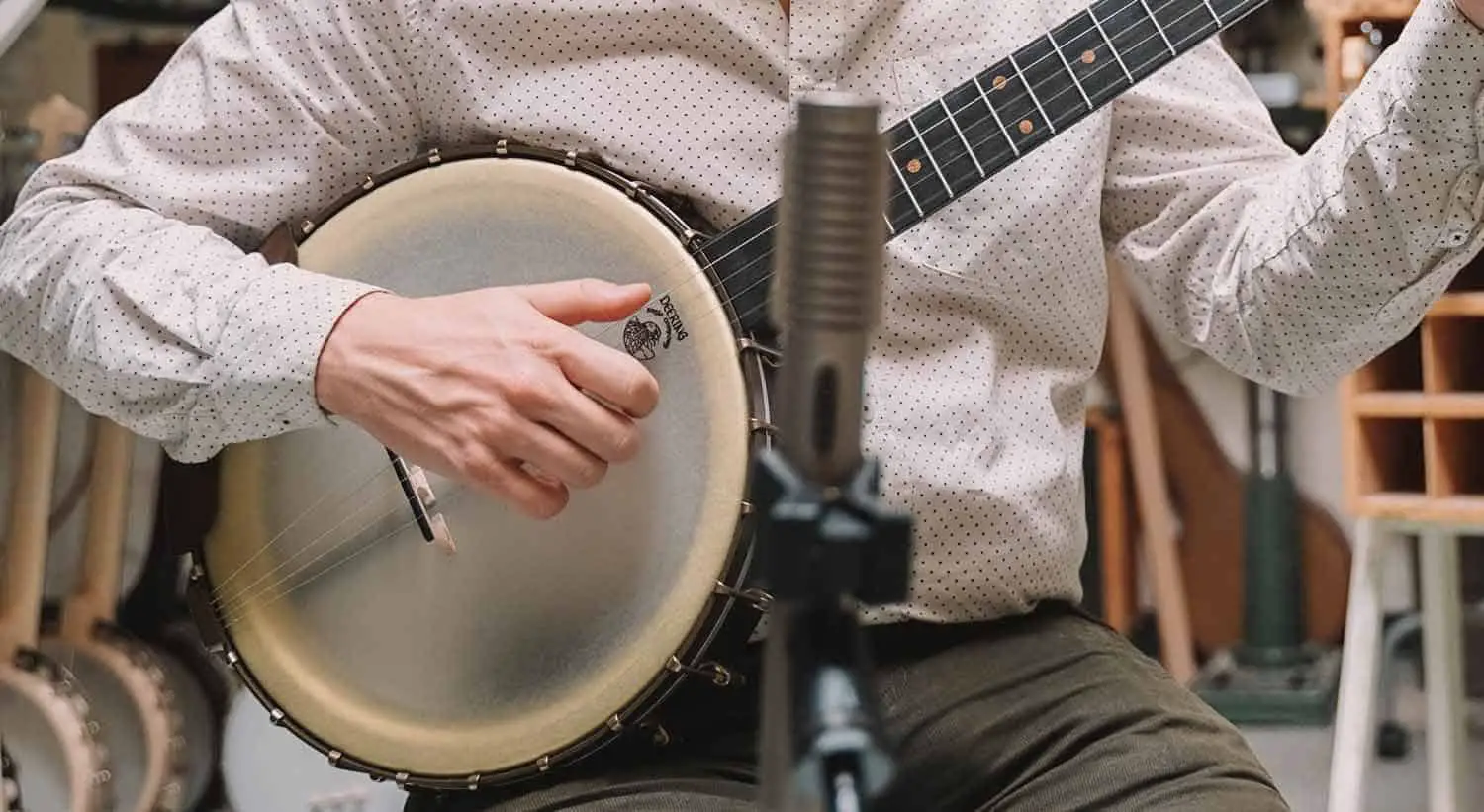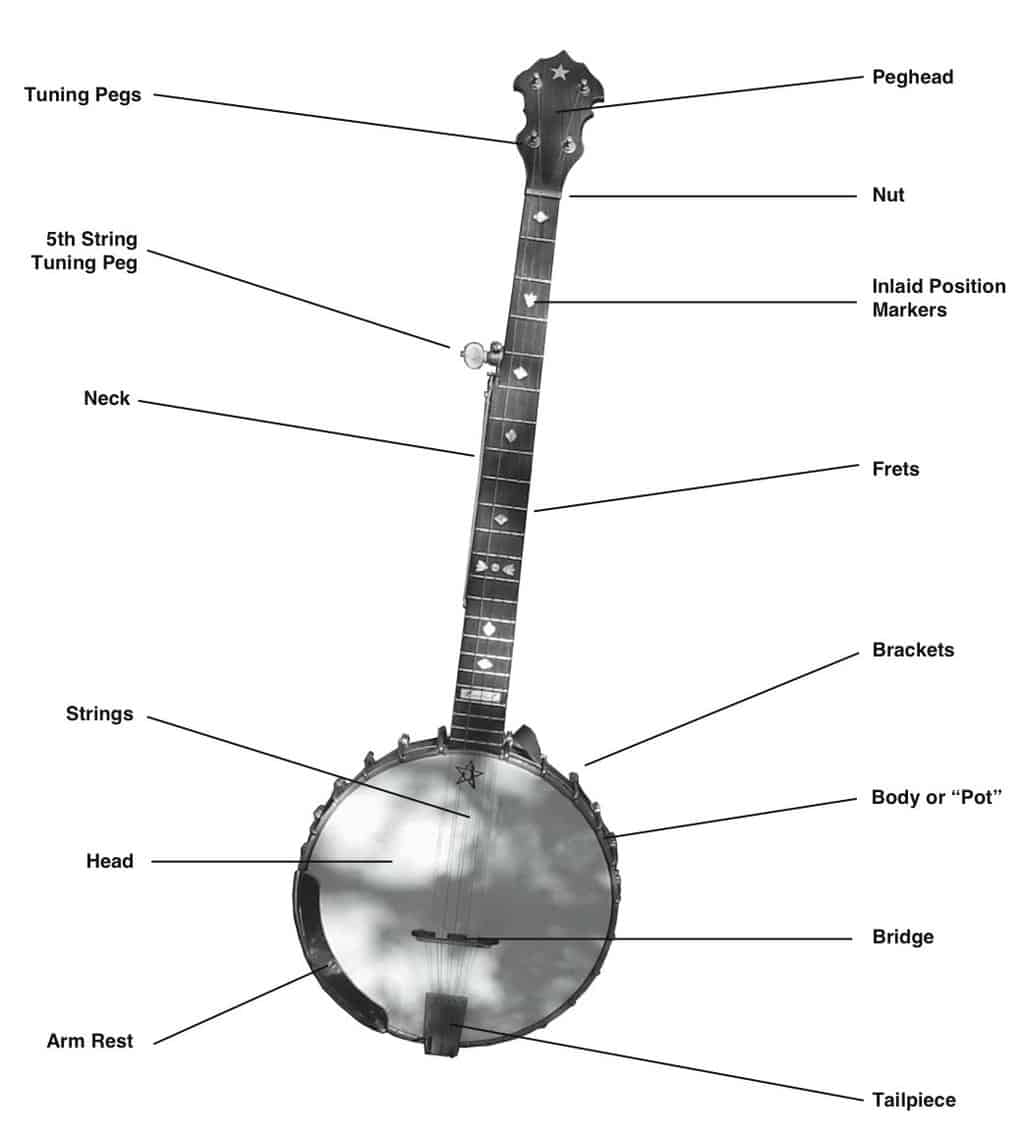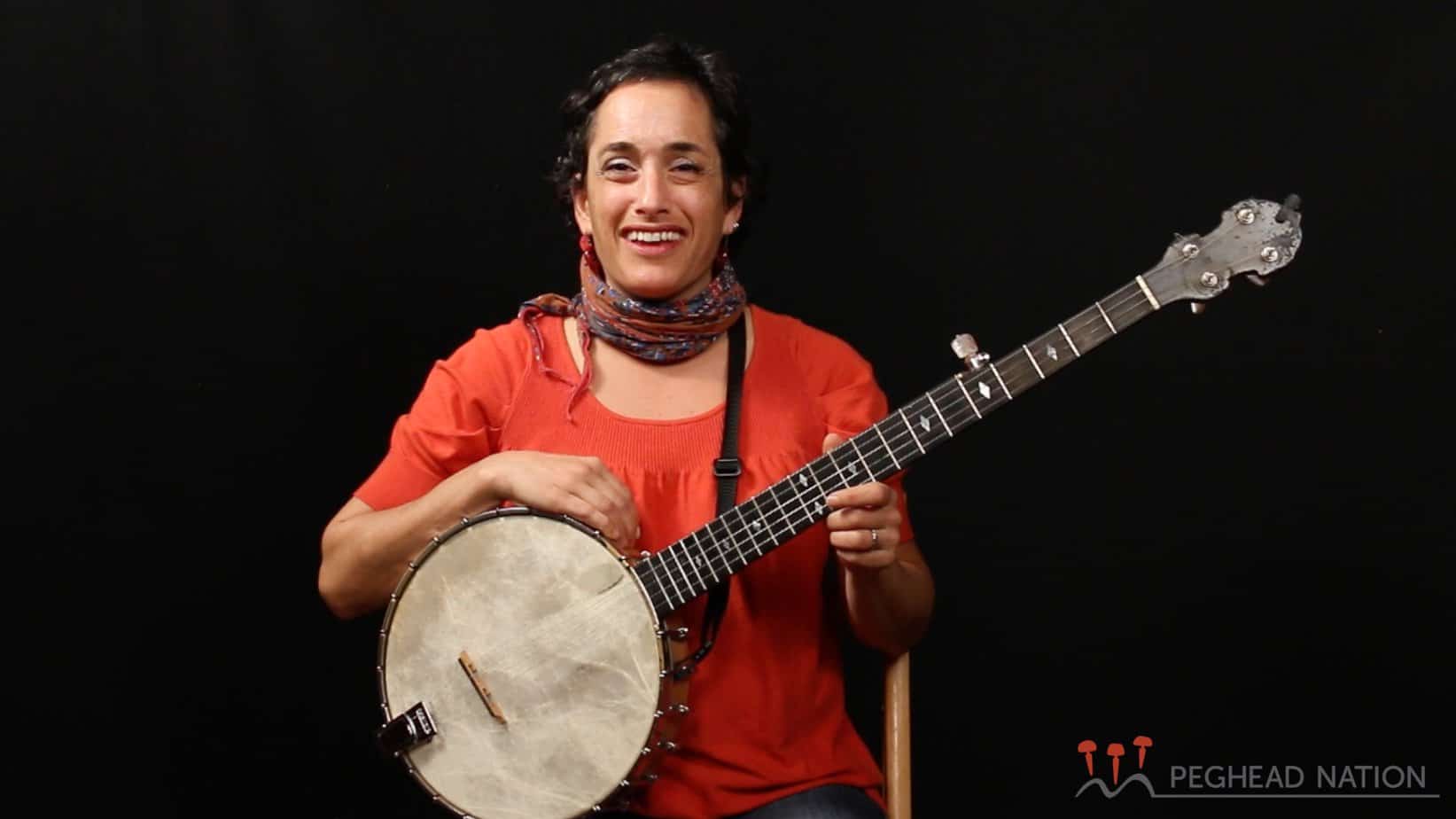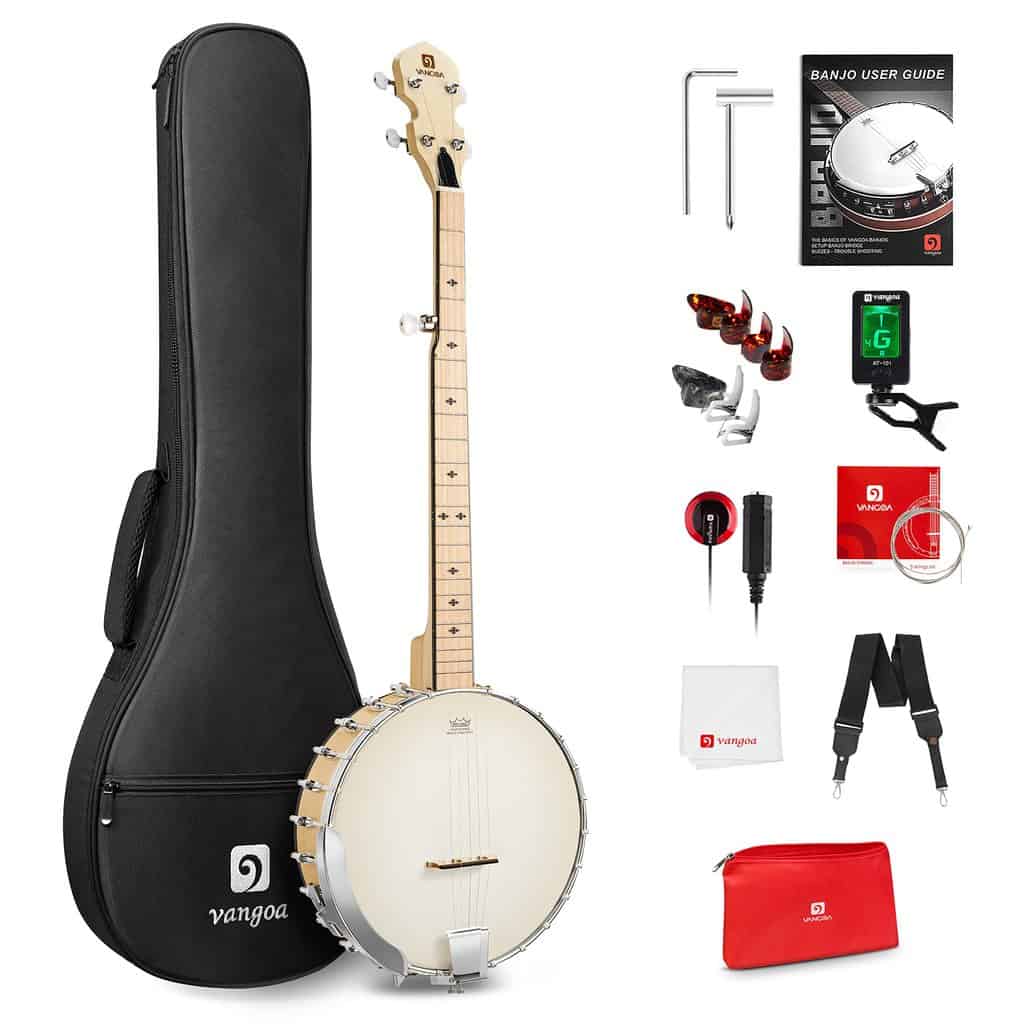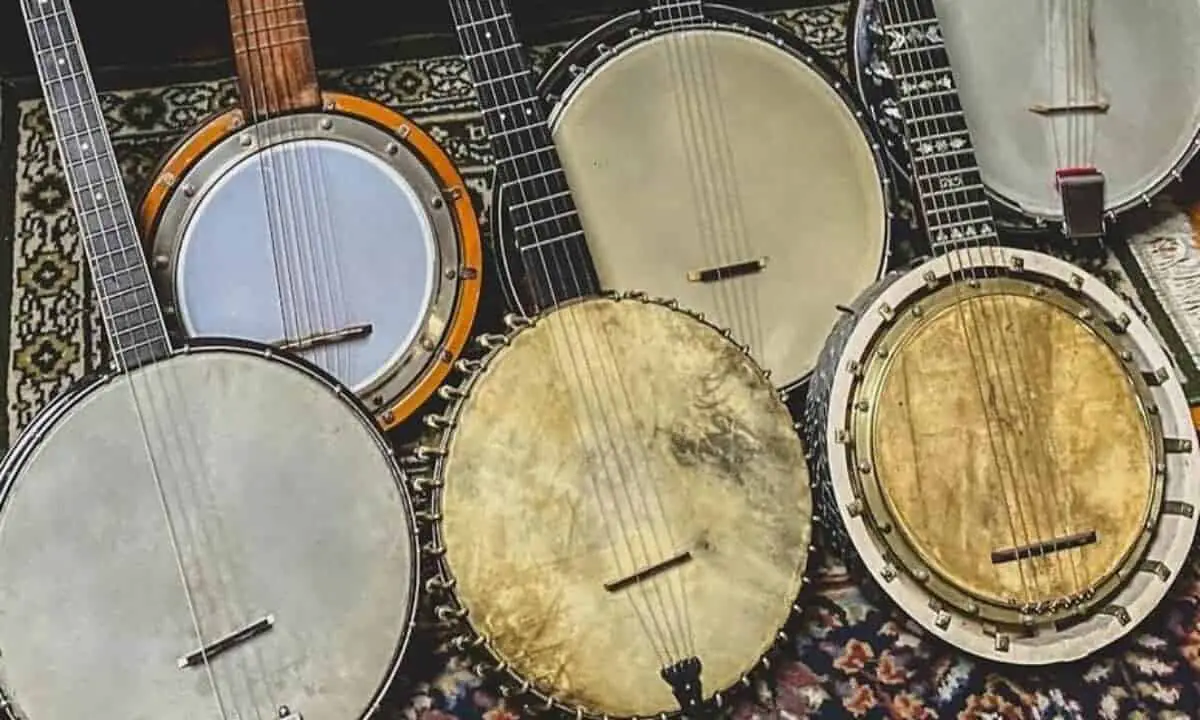Have you ever heard the twang of a banjo and wondered what style it was? Chances are it was a clawhammer banjo. As the most popular style of banjo, clawhammer banjos have been used to create some of the most beloved bluegrass and folk music for generations. In this article, I’ll explain what a clawhammer banjo is and how it differs from other types of banjos. I’ll also discuss some of the key characteristics that make this style of banjo so beloved by so many. With some practice, you’ll be able to join in on the fun and enjoy the sound of clawhammer banjo for yourself.
History of the Clawhammer Banjo
- The Clawhammer banjo, sometimes called frailing or “old-time” banjo, is a traditional American instrument that has roots that go back to the 18th century.
- The exact origin of the Clawhammer banjo is uncertain, but it is believed to have been derived from African stringed instruments brought to the Americas by slaves.
- The Clawhammer banjo has evolved over the years, and its most popular form today is the five-string banjo.
- The five-string banjo is believed to have been developed in the mid-19th century by African-American slaves in the Southern United States.
- The five-string banjo is typically played with a “clawhammer” style, where the strings are plucked or strummed with the fingers of the right hand while the left hand holds down the strings.
- The clawhammer style is often referred to as “frailing” or “old-time” banjo and is the most popular style of banjo playing today.
- The Clawhammer banjo is a popular instrument in traditional American music, and is often used in bluegrass, folk, and country music.
Parts of a Clawhammer Banjo
- Neck: The neck of a clawhammer banjo is usually made of maple or walnut, and is connected to the banjo’s body. It is fretted with metal frets and has tuning pegs at the top.
- Resonator: The resonator is the back of the banjo, which reflects the sound coming from the strings and projects it outward. It gives the banjo a louder sound.
- Pot: The pot is the circular body of the banjo, made up of a wooden rim with a stretched piece of animal skin, called the head, over it. The head is held in place by tension rods.
- Tailpiece: The tailpiece is a metal plate at the end of the banjo’s neck that holds the strings in place.
- Brackets: The brackets are metal pieces that are attached to the pot and hold the tension rods in place.
- Strings: The strings of a clawhammer banjo are made of steel and are tuned to the notes G, D, G, B, and D.
- Fingerboard: The fingerboard is the flat wooden surface on the neck of the banjo, where the player places their fingers to play the strings.
Playing Techniques of Clawhammer Banjo
Clawhammer banjo is a type of banjo playing that features a down-picking style rather than the up-picking style used in bluegrass music. The technique involves playing the banjo with the thumb striking the fifth string and the index and middle finger striking the other strings.
| Technique | Description |
|---|---|
| Drop Thumb | This is the most common technique used in clawhammer banjo playing. The thumb is used to pluck the fifth string while the index and middle finger are used to pluck the other strings. |
| Hammer-on | This technique involves the index or middle finger striking the strings in a downward motion as the thumb plucks the fifth string. This creates a more staccato sound. |
| Pull-off | This technique is the opposite of the hammer-on technique. The index or middle finger plucks the strings in an upward motion as the thumb plucks the fifth string. This creates a more sustained sound. |
| Slide | This technique involves sliding the index or middle finger along the strings as the thumb plucks the fifth string. This creates a smooth, melodic sound. |
| Muted String | This technique involves lightly touching the strings with the index or middle finger while the thumb plucks the fifth string. This creates a muted, percussive sound. |
Clawhammer banjo playing is extremely versatile and can be used to create many different sounds and effects. Experimentation is key to finding and mastering the techniques that are best suited for your style of playing.
Clawhammer Banjo Tuning
- Standard tuning is gDGCD.
- Double-Thumbed Down-Stroke (D-T-D) tuning is aGDF#A.
- Double-C Tuning is gDGCD.
- Double-C Tuning with a Capo is eBEG#B.
- Open-G Tuning is gDGBD.
- Open-G Tuning with a Capo is eBEFB.
Clawhammer banjo tuning typically involves retuning the instrument’s five strings in order to achieve a particular sound. Depending on the style of music, different tunings may be used, including Standard tuning, Double-Thumbed Down-Stroke (D-T-D) tuning, Double-C tuning, Double-C tuning with a capo, Open-G tuning, and Open-G tuning with a capo. Common tunings are: gDGCD for Standard and Double-C tuning; aGDF#A for Double-Thumbed Down-Stroke; gDGBD for Open-G tuning; and eBEFB and eBEG#B for Open-G tuning with a capo.
Clawhammer Banjo Strings
The clawhammer banjo is usually strung with five strings. It has four metal strings (generally made of steel or bronze) and one nylon string (or gut string). The first four strings are tuned in fifths and the fifth string is tuned one step higher than the fourth string. The metal strings are usually coded with color-coded tags so that the player can easily identify them.
| String | Tuning |
|---|---|
| 1st String | g |
| 2nd String | D |
| 3rd String | B |
| 4th String | G |
| 5th String | D’ |
The fifth string is usually made of nylon or gut and is used to produce a drone effect. It is usually tuned to a higher pitch than the fourth string, and it is not played directly but rather used as a drone note. It is also referred to as the “drone” string. The strings on the clawhammer banjo are usually strung with a medium-gauge string set, and the tension can be adjusted to the player’s preference.
Clawhammer Banjo Accessories
Clawhammer banjos require a few essential accessories to get started. A banjo pick, also known as a thumb pick, helps pluck the strings, while a banjo capo allows for easy transposition. A banjo strap holds the instrument to the player’s arm. A set of spare strings and a banjo tuner are essential for staying in tune. For a more professional sound, a banjo pickup can be added or a banjo microphone and sound system can be used. Finally, a banjo practice mute allows playing without making too much noise.
Clawhammer Banjo Styles
Clawhammer banjo is a style of playing the banjo which involves the use of the index finger and thumb of the right hand to pluck the strings. This style of playing is also known as frailing and is characterized by a more relaxed, down-stroking approach. The clawhammer style originated in the Appalachian and Ozark regions of the United States and has become a popular style of playing the banjo.
Clawhammer banjo has evolved over time and there are now several distinct styles. These styles can be broken down into three main categories: traditional, progressive, and hybrid.
| Style | Description |
|---|---|
| Traditional | This style is characterized by a fast, hard-driving beat and a strong down-stroking style. This is the style most closely associated with the traditional Appalachian and Ozark clawhammer banjo sound. |
| Progressive | This style of clawhammer banjo is characterized by a more melodic, improvisational approach. This style often incorporates more modern techniques, such as hammer-ons, pull-offs, slides, and finger-picking. This style is popular among many modern banjo players. |
| Hybrid | This style is a combination of the traditional and progressive styles, combining the hard-driving beat of the traditional style with the more melodic, improvisational approach of the progressive style. |
Clawhammer banjo is a highly versatile style of playing the banjo and it is used in many different genres of music. It can be heard in traditional folk, bluegrass, country, Celtic, and even some jazz and blues. It is a great style for jamming and for creating unique and interesting arrangements of songs.
Benefits of Playing Clawhammer Banjo
- Enhances creativity and improves musicality
- Provides an opportunity to connect with traditional folk music and culture
- Improves dexterity and coordination
- Builds confidence and encourages self-expression
- Improves fingerpicking skills
- Increases mental and physical well-being
- Develops better sense of rhythm
Frequently Asked Questions
What makes clawhammer banjo different from other banjo styles?
Clawhammer banjo is a style of playing banjo that is distinct from the more commonly known bluegrass banjo style. Clawhammer banjo is a down-picking style of playing, where the strings are plucked with the back of the fingernail, rather than the finger tips used in bluegrass. Clawhammer banjo also uses a different tuning, which is typically an open G tuning. This provides a much more mellow and melodic sound, rather than the brighter, sharper tones of bluegrass banjo. Additionally, the right hand technique used in clawhammer is much more relaxed, allowing for more ornamentation and improvisation.
What techniques are used in clawhammer banjo playing?
Clawhammer banjo playing involves a unique technique of striking the strings with the back of the fingernail of the index finger, then sounding the notes with a downward motion of the wrist, while the other fingers are used for fretting the strings. This technique is also known as ‘drop-thumbing’ or ‘frailing’. The banjo is held in a way that the strings are at the same level as the player’s chest, and the thumb does not rest on the neck of the banjo. This technique allows the banjo player to play up to three notes simultaneously, creating a unique sound.
How does the Clawhammer Banjo Sound Compared to Other Banjo Styles?
The clawhammer banjo is distinguished by its more relaxed and melodic sound compared to the brighter, more driving bluegrass sound of other banjo styles. Clawhammer often employs a syncopated, alternating bass pattern which gives this style its distinct sound. Clawhammer banjo is typically played with a single finger picking the strings, while the other hand taps on the head of the banjo. This allows the player to create a range of accents and rhythms that give the clawhammer banjo its unique sound.
What are some of the best clawhammer banjo songs?
Some of the most iconic clawhammer banjo songs include “Cripple Creek,” “Shady Grove,” “John Henry,” and “Old Joe Clark.” Clawhammer style is a popular old-time style of banjo playing that originated in the Appalachians and is characterized by a “bump-and-thump” technique. It is often played as a solo instrument and is used in a variety of genres including bluegrass, old-time, and folk music. Some of the more modern clawhammer banjo songs include “Cluck Old Hen” by the Carolina Chocolate Drops, “Blackberry Blossom” by Tony Trischka, and “Foggy Mountain Breakdown” by Earl Scruggs.
What accessories do I need to learn clawhammer banjo?
To learn clawhammer style banjo, you will need a banjo, a banjo pick, a banjo strap, and a banjo tuner. A banjo pick is a thin, metal pick used to strum and pick the strings. A banjo strap is used to hang the banjo from your neck, allowing you to play comfortably. A banjo tuner is used to keep the strings in tune. Additionally, you will need a metronome and a practice plan to help you stay on track while learning.
Conclusion
The clawhammer banjo is a versatile banjo style that has been around for centuries. It is popular among beginners and experienced players alike. It is a unique style that can be used for a variety of musical genres including folk, bluegrass, old-time, and contemporary. It produces a unique sound that is both warm and powerful. The clawhammer banjo is an essential part of the bluegrass and folk music tradition, and is a great choice for anyone looking to get into playing the banjo.

